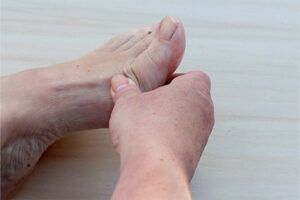Dermatology
Plaque Psoriasis
Identifying Super-Responders to Plaque Psoriasis Treatment
In general, treatment with biologics often leads to a significant improvement in plaque psoriasis symptoms. Some patients quickly achieve an excellent response to one biologic and remain clear of their psoriasis symptoms for an extended period, and such patients are referred to as super-responders. These super-responders are becoming increasingly recognized in the literature.
Definitions can vary in different clinical trials, but, in general, a super-responder is described as a patient who takes a medication for their plaque psoriasis and has a dramatically positive response to it. Their plaque psoriasis is fully cleared and remains clear over multiple visits, in either a clinical trial or a treatment clinic setting. To best meet the definition of super-response, that response should be achieved relatively early in the course of therapy.
In my opinion, the best study to date on super-responders is the GUIDE study. It investigated super-responders to guselkumab therapy in patients with moderate to severe plaque psoriasis to determine whether those who achieved a super-response could be dosed less frequently than the recommended every-8-week dosing schedule and still maintain their response. In the study, a super-responder was defined as a patient whose plaque psoriasis was 100% clear at both weeks 20 and 28 of guselkumab therapy. After receiving guselkumab every 8 weeks for 28 weeks, the super-responders were randomized to either continue receiving guselkumab every 8 weeks or have their dosing interval extended to every 16 weeks. Non–super-responders at 28 weeks were also randomized to receive guselkumab at either 8- or 16-week intervals. Patients were followed for a total of 68 weeks.
The GUIDE study demonstrated that super-responders could be dosed down to a 16-week interval and still respond similarly to patients who continued on the 8-week interval. The extended dosing frequency did not have a large impact on treatment efficacy for super-responders. These patients appear to be exquisitely sensitive to the mechanism of action of the drug, and, therefore, treatment may be given less frequently.
Can we apply this principle to any drug in our plaque psoriasis treatment armamentarium? I think that the concept may be applicable to other IL-23 inhibitors beyond guselkumab, although this type of clinical trial data is not yet available. But is it also the same in patients receiving IL-17 inhibitors or TNF inhibitors? We do not yet have enough data to tell us, and these types of studies would be difficult to conduct for any therapy that did not already demonstrate a high level of clinical efficacy. In my practice, I have had patients taking some of these medications who, after achieving a very robust response, have chosen to dose less frequently on their own. These patients have returned to the clinic and reported that they now take their medication on an extended dosing interval, and they have often maintained their disease activity at a level that is satisfactory to them.
Although more data are needed on this patient type, the GUIDE study found that those who were newly diagnosed with psoriasis in the previous 2 years and those who were not on other therapies in the past were more likely to demonstrate a super-response. Other emerging patterns that appear to be associated with super-responders include patients with lower body weight/body mass index and patients with fewer comorbidities at baseline. Currently, we identify potential super-responders not based on pretreatment variables but rather on their response to therapy.
ClinicalTrials.gov. A study to evaluate further therapeutic strategies with guselkumab in participants with moderate-to-severe plaque-type psoriasis (GUIDE). Updated February 1, 2024. Accessed February 15, 2024. https://classic.clinicaltrials.gov/ct2/show/study/NCT03818035
Eyerich K, Weisenseel P, Pinter A, et al. IL-23 blockade with guselkumab potentially modifies psoriasis pathogenesis: rationale and study protocol of a phase 3b, randomised, double-blind, multicentre study in participants with moderate-to-severe plaque-type psoriasis (GUIDE). BMJ Open. 2021;11(9):e049822. doi:10.1136/bmjopen-2021-049822
Feldman SR, Merola JF, Pariser DM, et al. Clinical implications and predictive values of early PASI responses to tildrakizumab in patients with moderate-to-severe plaque psoriasis. J Dermatolog Treat. 2022;33(3):1670-1675. doi:10.1080/09546634.2021.1898528
Loft N, Egeberg A, Rasmussen MK, et al. Prevalence and characterization of treatment-refractory psoriasis and super-responders to biologic treatment: a nationwide study. J Eur Acad Dermatol Venereol. 2022;36(8):1284-1291. doi:10.1111/jdv.18126
Mastorino L, Susca S, Cariti C, et al. “Superresponders” at biologic treatment for psoriasis: a comparative study among IL17 and IL23 inhibitors. Exp Dermatol. 2022;10.1111/exd.14731. doi:10.1111/exd.14731
Ruiz-Villaverde R, Vasquez-Chinchay F, Rodriguez-Fernandez-Freire L, Armario-Hita JC, Pérez-Gil A, Galán-Gutiérrez M. Super-responders in moderate-severe psoriasis under guselkumab treatment: myths, realities and future perspectives. Life (Basel). 2022;12(9):1412. doi:10.3390/life12091412
Schäkel K, Reich K, Asadullah K, et al. Early disease intervention with guselkumab in psoriasis leads to a higher rate of stable complete skin clearance (‘clinical super response’): week 28 results from the ongoing phase IIIb randomized, double-blind, parallel-group, GUIDE study. J Eur Acad Dermatol Venereol. 2023;37(10):2016-2027. doi:10.1111/jdv.19236











